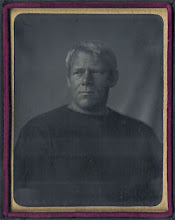
Dash Upstate
2002
Dash Snow, who rebelled against his privileged and art-loving family to become a promising young New York artist in his own right, died Monday night at a hotel in the East Village. He was 27 and lived in Manhattan.
His death, at Lafayette House, on East Fourth Street, was confirmed by his grandmother, the art collector and philanthropist Christophe de Menil. The cause was a drug overdose, she said.
Mr. Snow was known to be a heroin addict, but Ms. de Menil said he had been in rehab in March and had been off drugs until very recently.
Mr. Snow was a rebel as young as 13, when his parents — Taya Thurman, a daughter of Ms. de Menil’s, and Christopher Snow, a musician — sent him to a reformatory-like school in Georgia. He stayed there two years. After his release, he returned to New York and began living on his own. With no more than a ninth-grade education, he was largely self taught. His art would eventually include photography, drawing, collage, installation, zines, film and video. But he began, in his teens, as a graffiti artist known by the tag “Sace.”
Handsome, heavily tattooed, with waist-length blond hair and a full beard, he soon became something of a downtown legend. He began taking Polaroids of the sex- and drug-fueled young bohemian circles in which he moved, recording his life and times in a style similar to that of his close friend Ryan McGinley and older artists like Nan Goldin and Larry Clark. Several of these images were included in the 2006 Whitney Biennial.
Mr. Snow had his first solo show in 2005, at Rivington Arms, a gallery on the Lower East Side. (His work is now represented by Peres Projects of Los Angeles and Berlin.) By then, Mr. Snow had become close with a group of artists that included Nate Lowman, Adam McEwen and Dan Colen, all of whom were experimenting with appropriation, or found-image, art in various mediums.
He began using newspapers in different ways, drawing in colored pencil, for example, on historic images, like a photograph of the shooting of President John F. Kennedy. He made large collages out of headlines and strange, delicate, sexually suggestive ones that evoked the medium’s Dada origins. He had also started making short Super 8 films and converting them to video.
Sexuality, violence and life’s fragility were frequent themes in Mr. Snow’s work, but there was also an air of exuberant misbehavior. A 2007 article in New York magazine, “Warhol’s Children,” highlighted Mr. Snow’s art, antics and underground stature, bringing his notoriety to a wider audience. It mentioned that he and his friends liked to turn hotel rooms into “hamster nests” by littering them with torn-up telephone books.
That summer, Mr. Snow and Mr. Colen went public with this practice. In their installation “Nest,” they filled Deitch Projects, a SoHo gallery, with several feet of shredded phonebooks and invited visitors to hang out, party and add graffiti to the walls. Many cooperated.
Mr. Snow was born in Manhattan in 1981 to a family whose cultural contributions included the Menil Collection in Houston and the Dia Center for the Arts in Manhattan and Beacon, N.Y. When he was 18, he married Agathe Aparru, now the artist Agathe Snow. The marriage ended in divorce.
In addition to his grandmother and his parents, Mr. Snow is survived by a grandfather, Robert Thurman; his sister, Caroline Snow; his brother, Maxwell Snow; his companion, Jade Berreau, and their daughter, Secret, all of Manhattan.
- Roberta Smith, NY TIMES, July 15, 2009
 Big Bill Tilden
Big Bill Tilden Photographer Marco Queral shakes hands with a Humpback Whale
Photographer Marco Queral shakes hands with a Humpback Whale On 20 July 1969, Mission Commander Neil Armstrong & Lunar Module Pilot Buzz Aldrin became the first men to walk on the moon. As the lunar module touched down on the moon, Aldrin declared "Houston, Tranquility Base, here. The Eagle has landed." At 10:56 pm Armstrong began his descent to the moon's surface. He stepped off the Eagle and onto the moon, the first human ever to walk on another planet. His words still resonate today: "That's one small step for man, one giant leap for mankind." The event was broadcast back to Earth; at least 600 million people watched live, as Armstrong & Aldrin walked on the moon. Walter Cronkite, who passed away 2 days ago, anchored the CBS news desk and exclaimed "Oh boy!"
On 20 July 1969, Mission Commander Neil Armstrong & Lunar Module Pilot Buzz Aldrin became the first men to walk on the moon. As the lunar module touched down on the moon, Aldrin declared "Houston, Tranquility Base, here. The Eagle has landed." At 10:56 pm Armstrong began his descent to the moon's surface. He stepped off the Eagle and onto the moon, the first human ever to walk on another planet. His words still resonate today: "That's one small step for man, one giant leap for mankind." The event was broadcast back to Earth; at least 600 million people watched live, as Armstrong & Aldrin walked on the moon. Walter Cronkite, who passed away 2 days ago, anchored the CBS news desk and exclaimed "Oh boy!" Canadian Pianist Glenn Gould Playing Concert Grand Piano as He Records Bach's Goldberg Variations in Recording Studio
Canadian Pianist Glenn Gould Playing Concert Grand Piano as He Records Bach's Goldberg Variations in Recording Studio